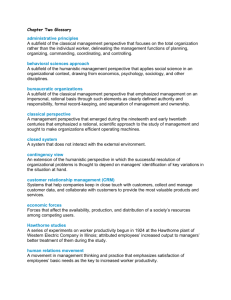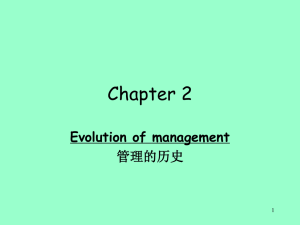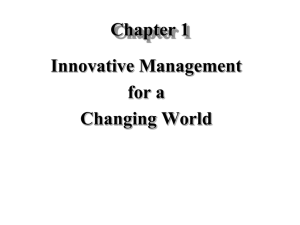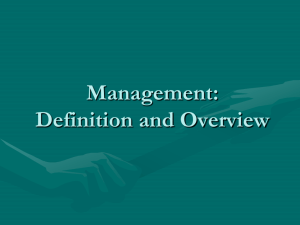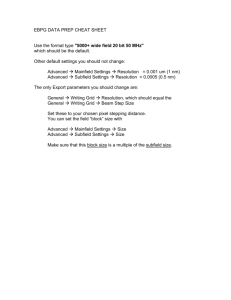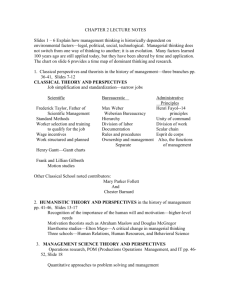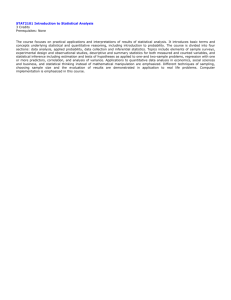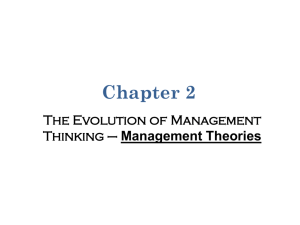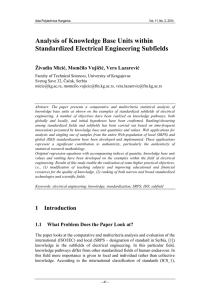The attainment of The management organizational goals in function concerned
advertisement
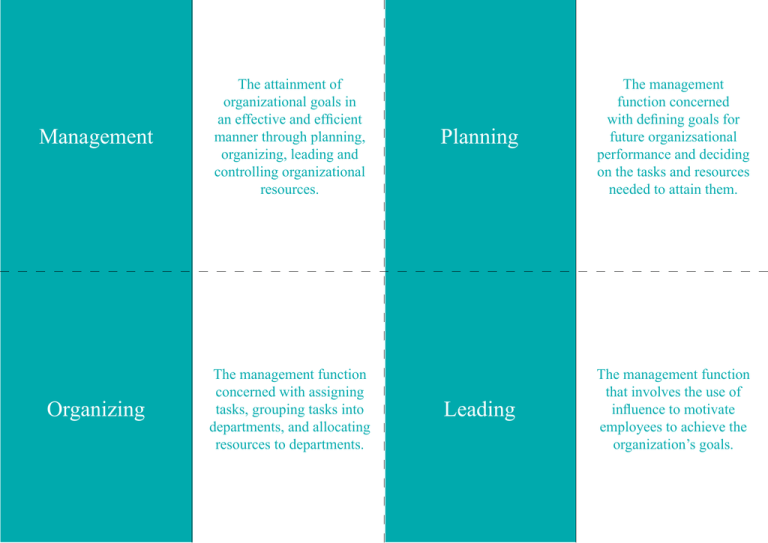
Management The attainment of organizational goals in an effective and efficient manner through planning, organizing, leading and controlling organizational resources. Organizing The management function concerned with assigning tasks, grouping tasks into departments, and allocating resources to departments. Planning The management function concerned with defining goals for future organizsational performance and deciding on the tasks and resources needed to attain them. Leading The management function that involves the use of influence to motivate employees to achieve the organization’s goals. Controlling Effectiveness The management function concerned with monitoring employees’ activities, keeping the organization on track toward its goals, and making corrections as needed. The degree to which the organization achieves a stated goal. Organization A social entity that is goal directed and deliberately structured. Efficiency The use of minimal resources – raw materials, money and people – to produce a desired volume of output. Performance The organization’s ability to attain its goals by using resources in an efficient and effective manner. Human skill The ability to work with and through other people and to work effectively as a group member. Conceptual skill The cognitive ability to see the organization as a whole system and the relationships among its parts. Technical skill The understanding of and proficiency in the performance of specific tasks. Top manager A manager who is at the top of the organizational hierarchy and is responsible for the entire organization. Project manager A manager responsible for a temporary work project that involves the participation of other people from various functions and levels of the organization. Middle manager A manager who works at the middle levels of the organization and is responsible for business units and major departments. First-line manager A manager who is at the first or second management level and is directly responsible for the production of goods and services. Functional manager Role A manager who is responsible for a department that performs a single functional task and has employees with similar A set of expectations for one’s behaviour. General manager A manager who is responsible for several departments that perform different functions. Interim manager A manager who is not affiliated with a specific organization but works on a project-by-project basis or provides expertise to organizations in a specific area. Social forces Economic forces The aspects of a culture that guide and influence relationships among people – their values, needs, and standards of behaviour. Forces that affect the availability, production, and distribution of a society’s resources among competing users. Political forces The influence of political and legal institutions on people and organizations. Classical perspective A management perspective that emerged during the nineteenth and early twentieth centuries that emphasized a rational, scientific approach to the study of management and sought to make organizations efficient operating machines. Scientific management A subfield of the classical management perspective that emphasized scientifically determined changes in management practices as the solution to improving labour productivity. Administrative principles A subfield of the classical management perspective that focuses on the total organization rather than the individual worker, delineating the management functions of planning, organizing, commanding, coordinating and controlling. Bureaucratic organizations A subfield of the classical management perspective that emphasized management on an impersonal, rational basis through such elements as clearly defined authority and responsibility, formal record-keeping, and separation of management and ownership. Humanistic perspective A management perspective that emerged near the late nineteenth century and emphasized understanding human behaviour, needs, and attitudes in the workplace. Hawthorne studies Human resources perspective A series of experiments on worker productivity begun in 1924 at the Hawthorne plant of Western Electric Company in Illinois; attributed employees’ increased out-put to managers’ better treatment of them during the study. A management perspective that suggests jobs should be designed to meet higher- level needs by allowing workers to use their full potential. Human relations movement A movement in management thinking and practice that emphasizes satisfaction of employees’ basic needs as the key to increased worker productivity. Behavioural sciences approach A subfield of the humanistic management perspective that applies social science in an organizational context, drawing from economics, psychology, sociology and other disciplines. Management science perspective A management perspective that emerged after World War II and applied mathematics, statistics and other quantitative techniques to managerial problems. System A set of interrelated parts that function as a whole to achieve a common purpose. Systems theory An extension of the humanistic perspective that describes organizations as open systems characterized by entropy, synergy and subsystem interdependence. Open system A system that interacts with the external environment. Closed system A system that does not interact with the external environment. Synergy The concept that the whole is greater than the sum of its parts. Entropy The tendency for a system to run down and die. Subsystems Parts of a system that depend on one another for their functioning. Contingency view An extension of the humanistic perspective in which the successful resolution of organizational problems is thought to depend on managers’ identification of key variations in the situation at hand. Total Quality Management (TQM) A concept that focuses on managing the total organization to deliver quality to customers. Four significant elements of TQM are employee involvement, focus on the customer, benchmarking and continuous improvement. Learning organization An organization in which everyone is engaged in identifying and solving problems, enabling the organization to continuously experiment, improve and increase its capability. E-business Work an organization does by using electronic linkage E-commerce Enterprise resource planning (ERP) Business exchanges or transactions that occur electronically. Systems that unite a company’s major business functions – order processing, product design, purchasing, inventory and so on. Supply chain management Managing the sequence of suppliers and purchasers, covering all stages of processing from obtaining raw materials to distributing finished goods to final customers. Knowledge management The efforts to systematically find, organize and make available a company’s intellectual capital and to foster a culture of continuous learning and knowledge sharing. Customer relationship management (CRM) Systems that help companies track customers’ interaction with the firm and allow employees to call up information on past transactions. Outsourcing Contracting out selected functions or activities of an organization to other organizations that can do the work more cost-efficiently.
